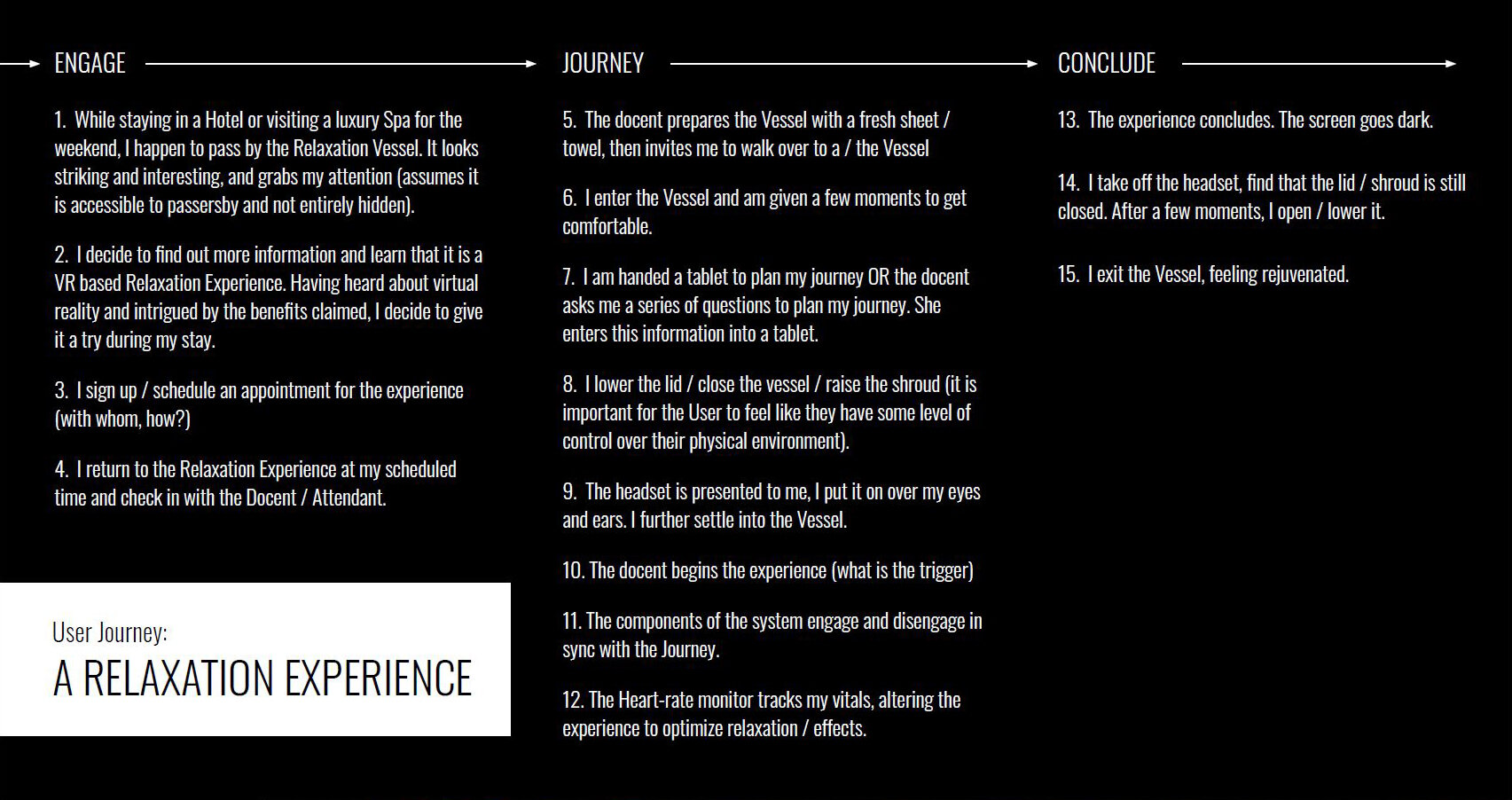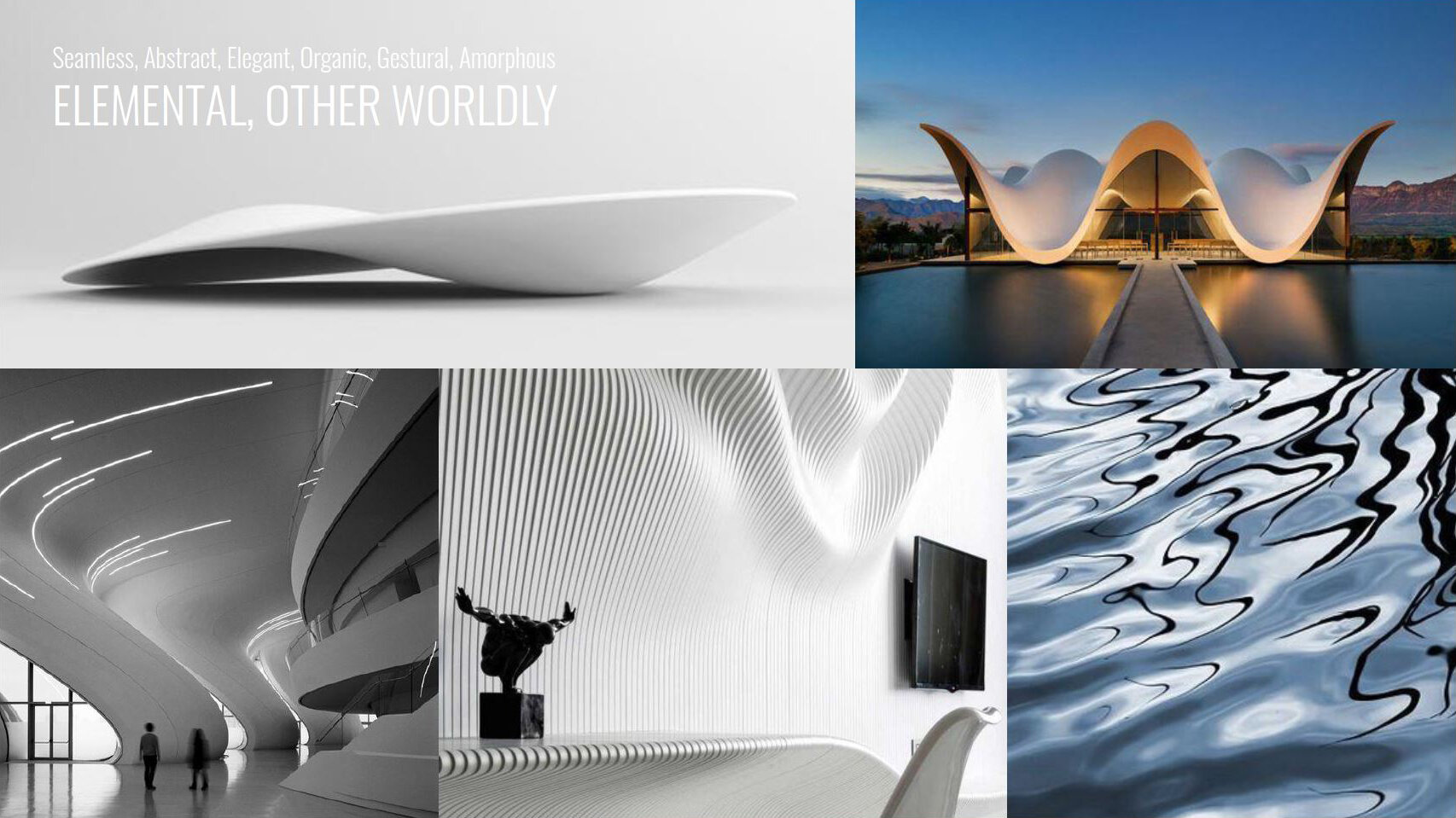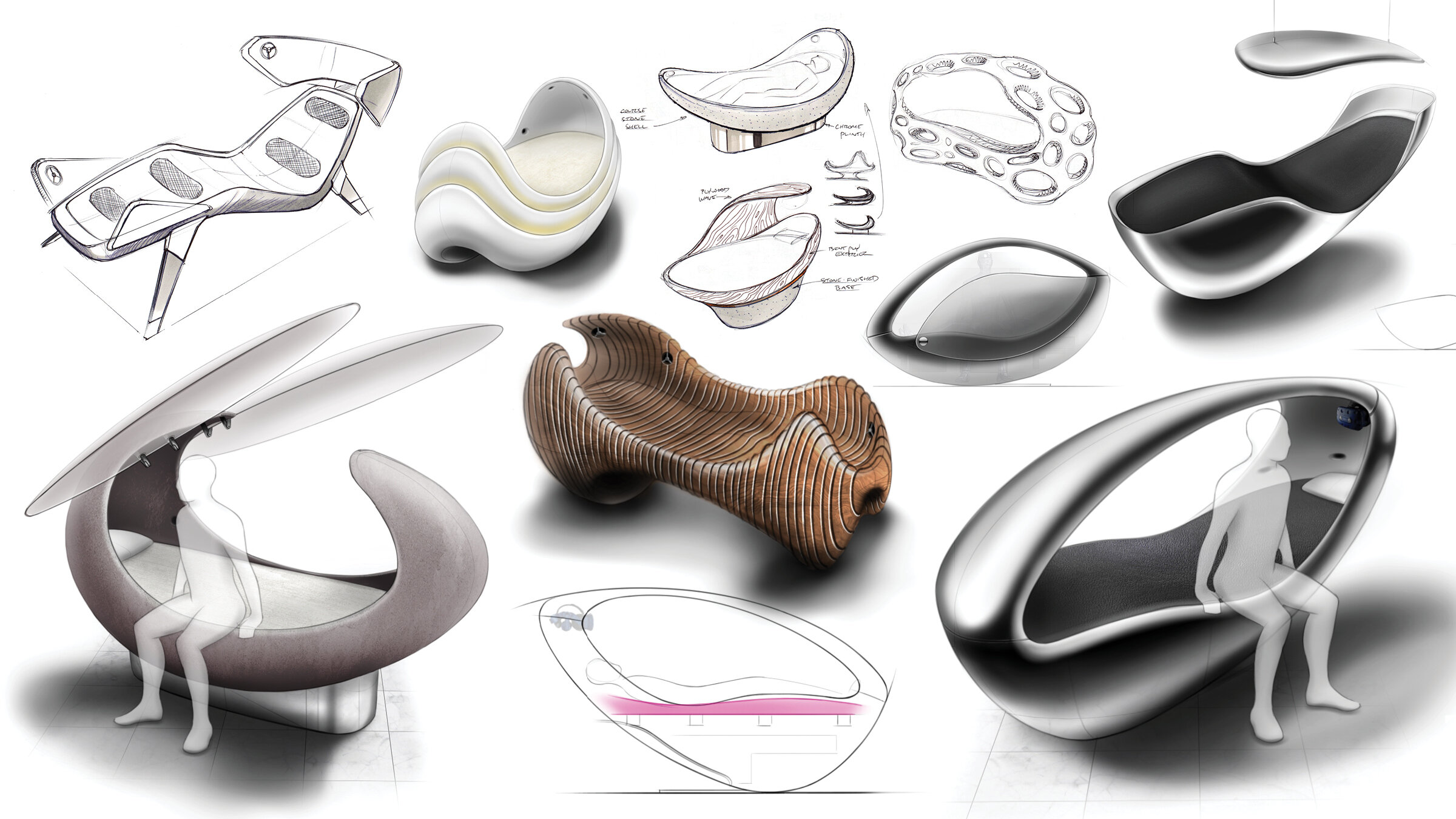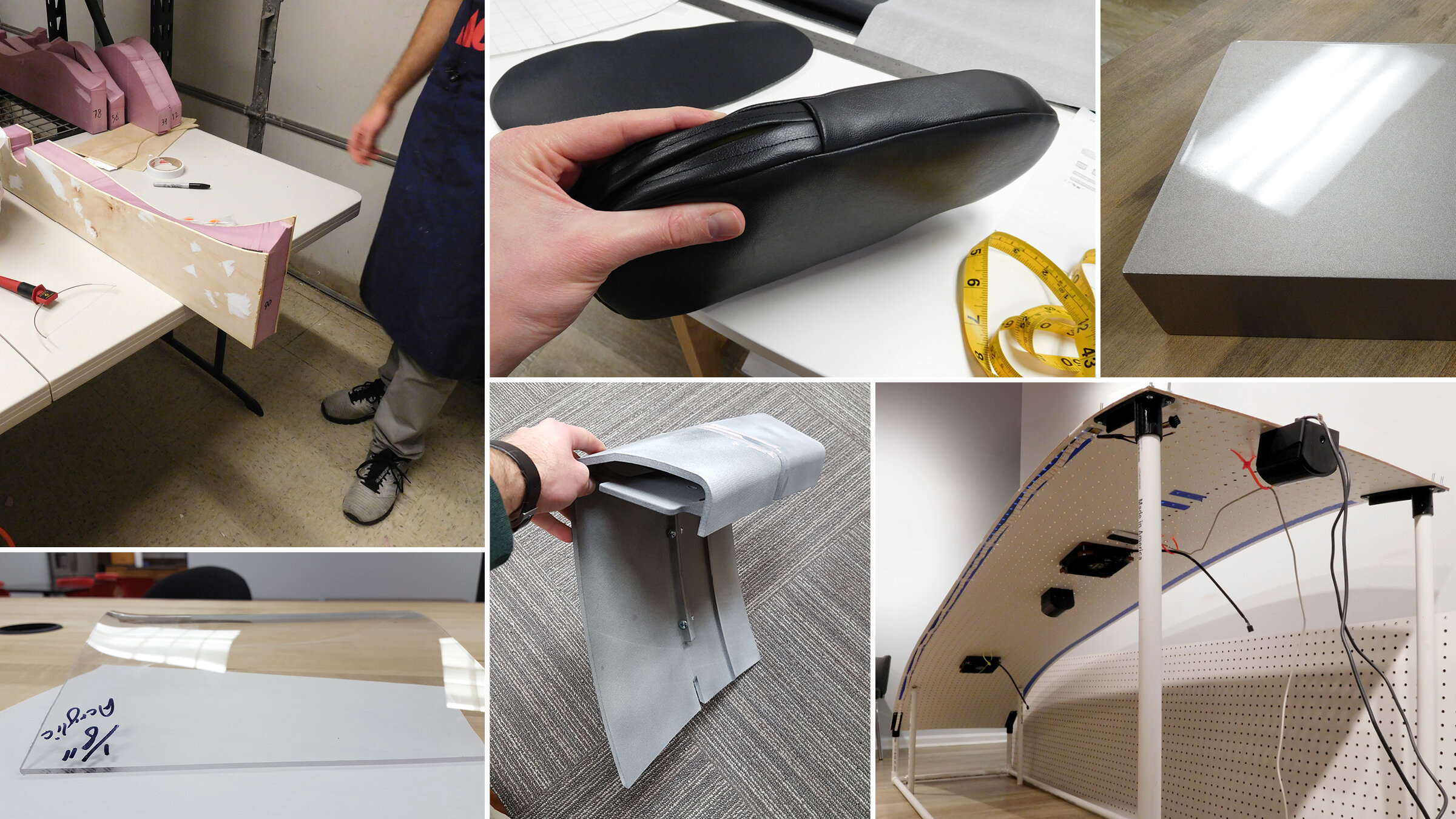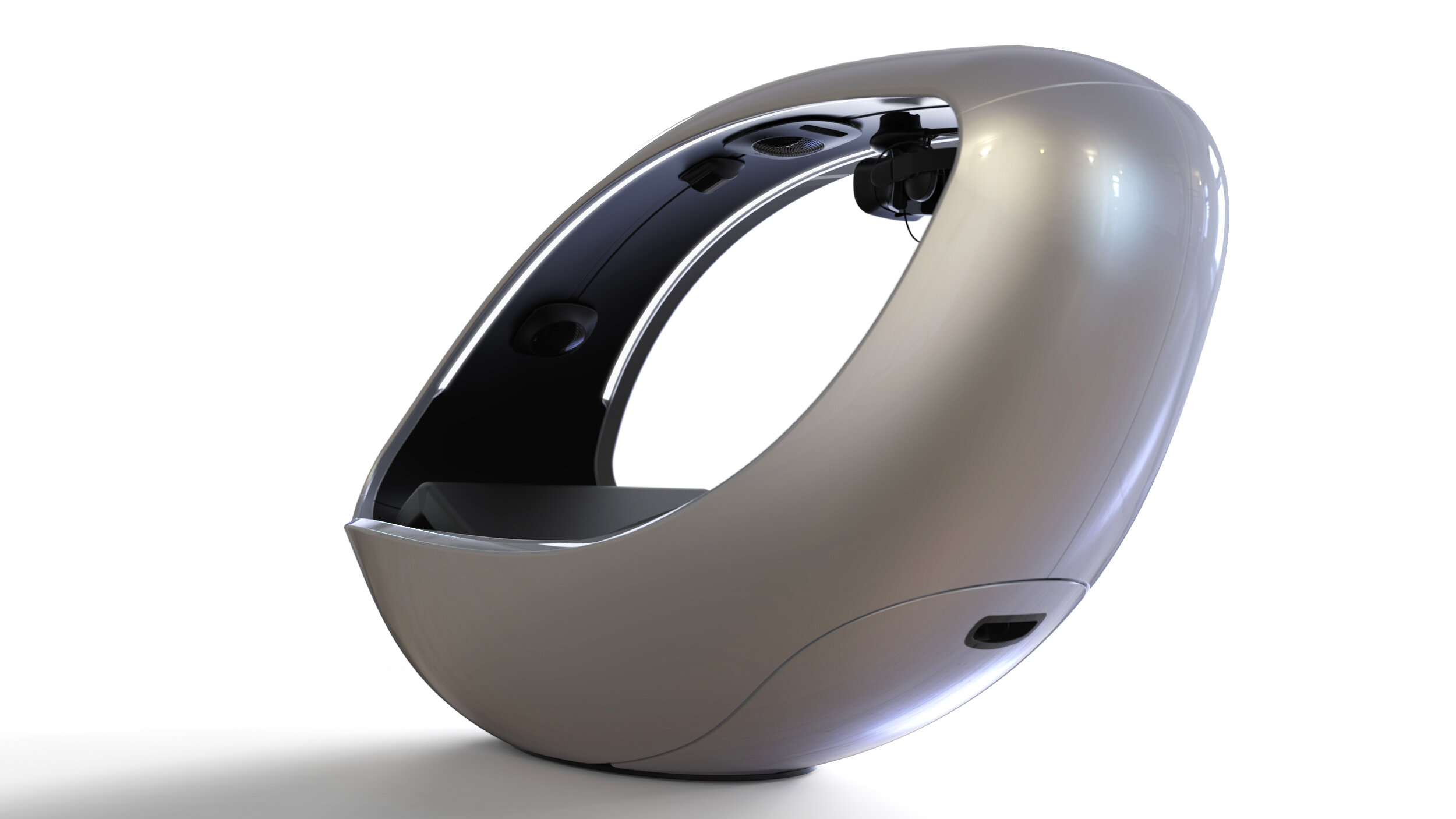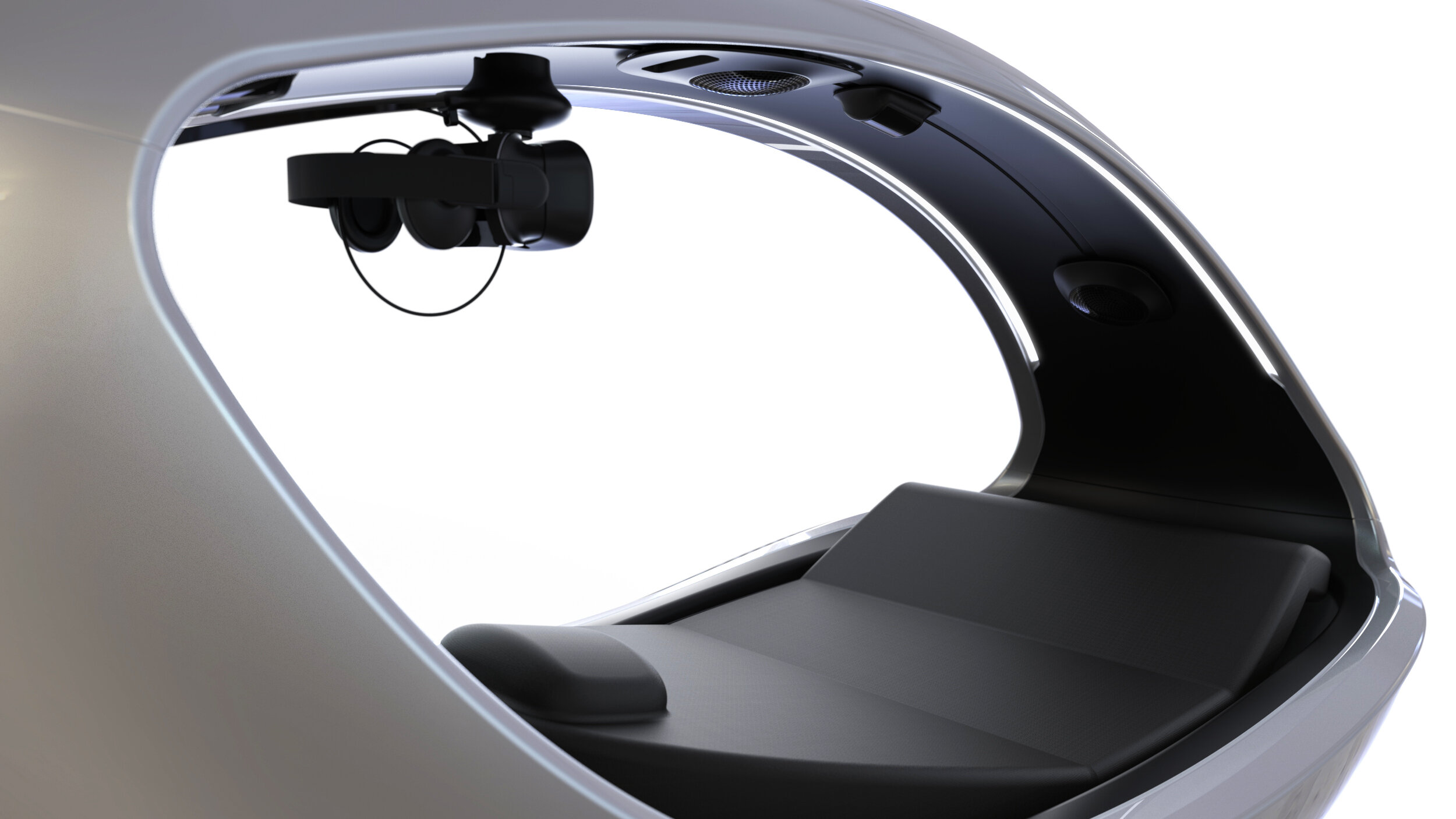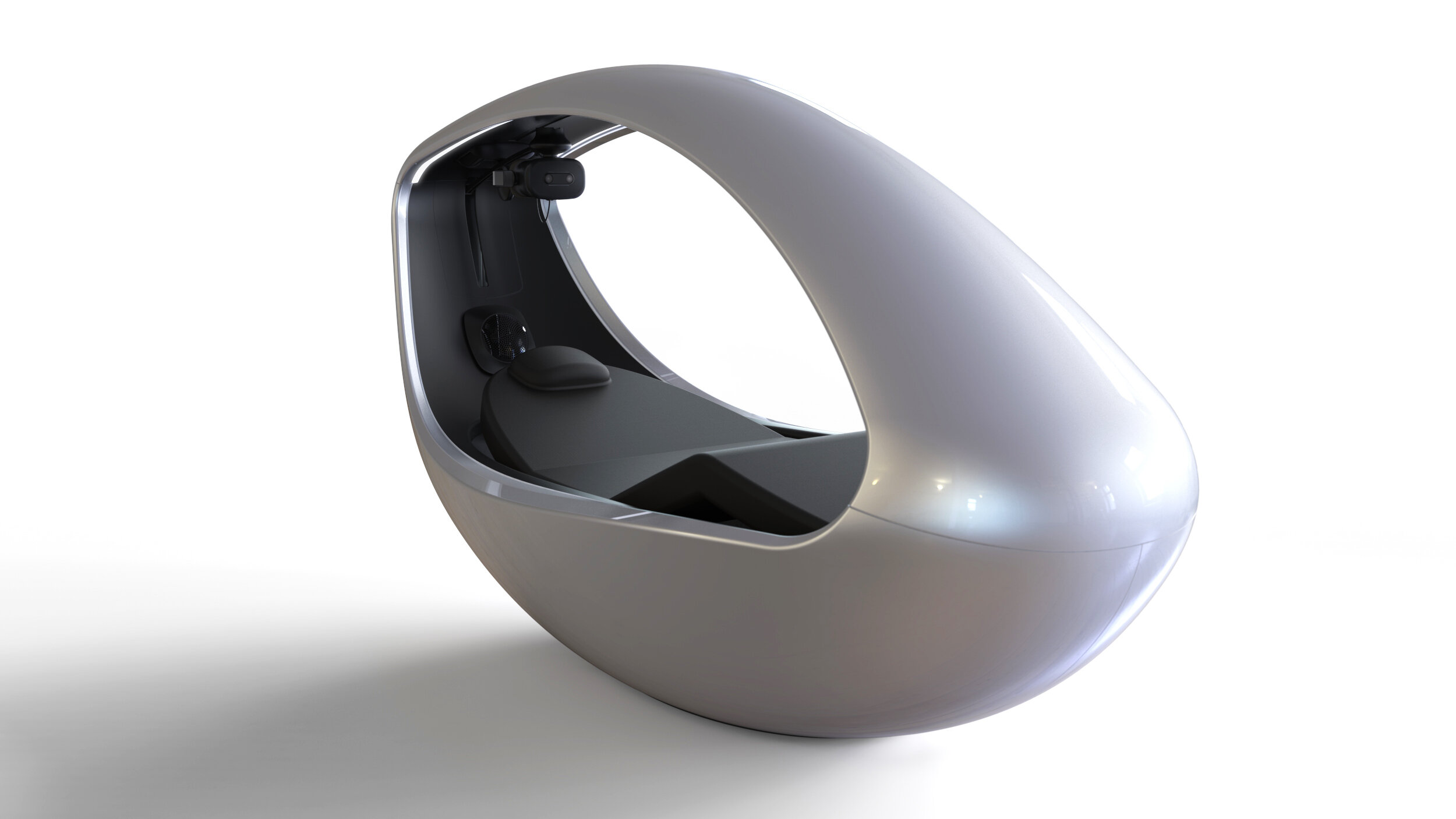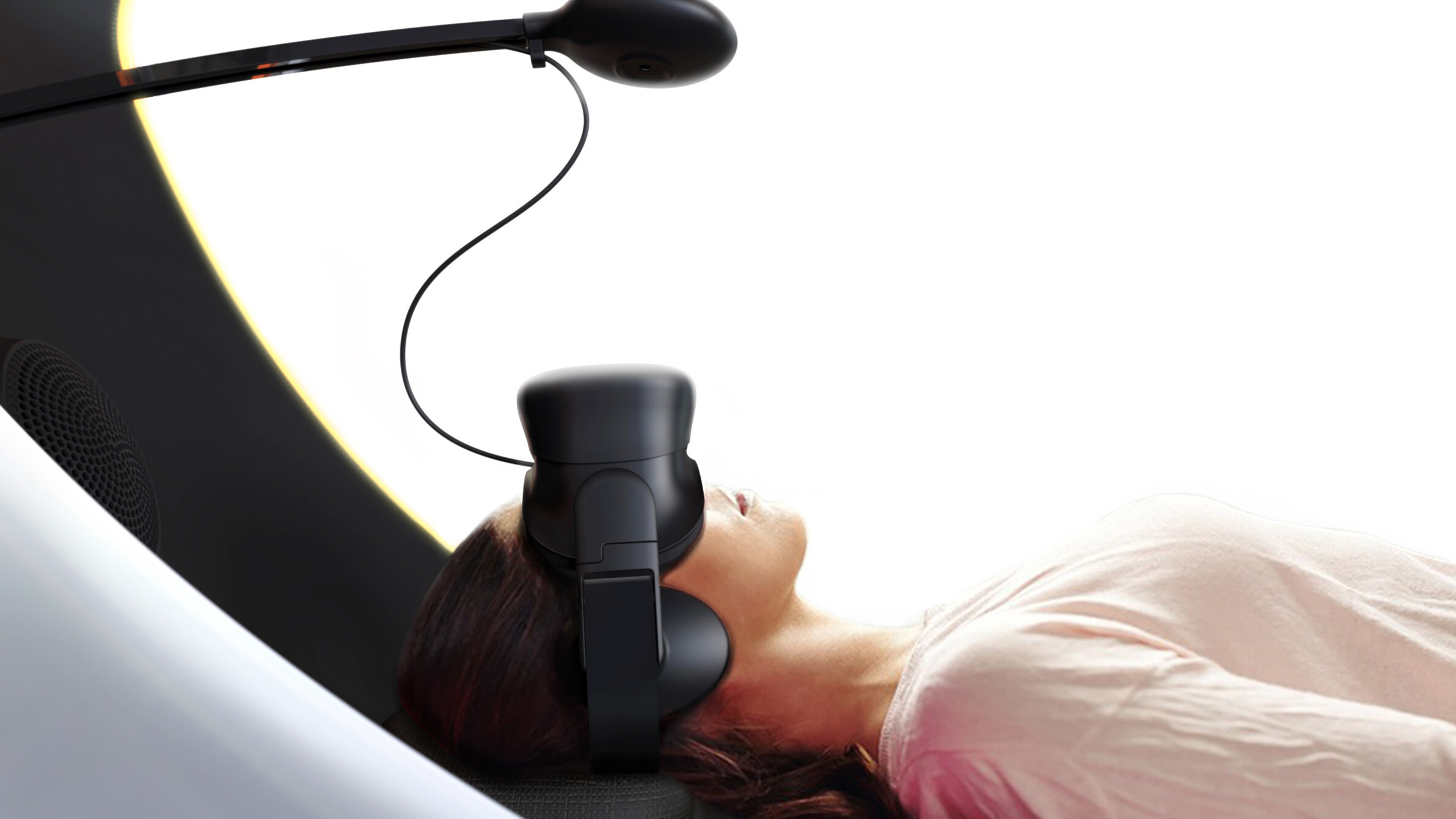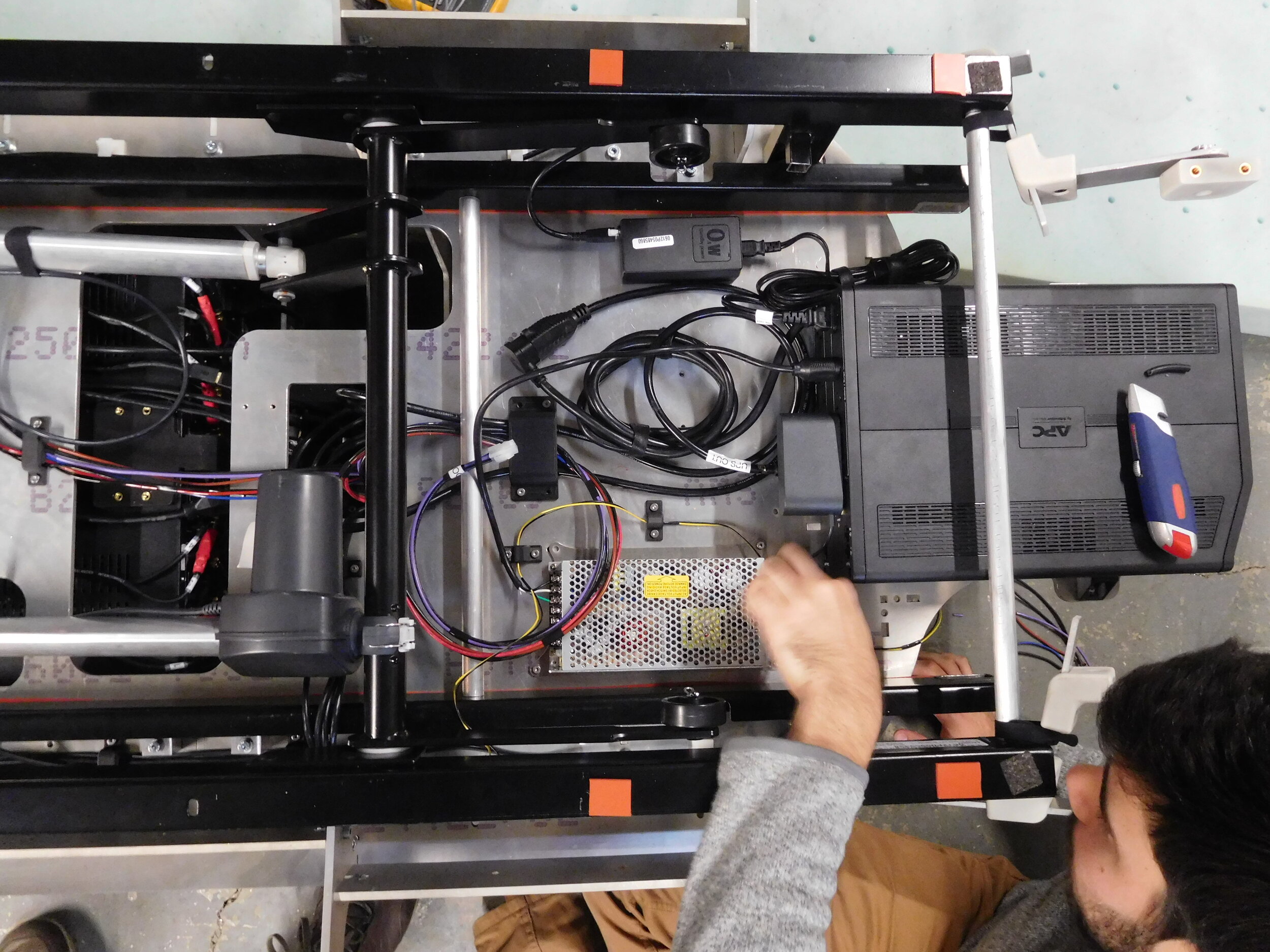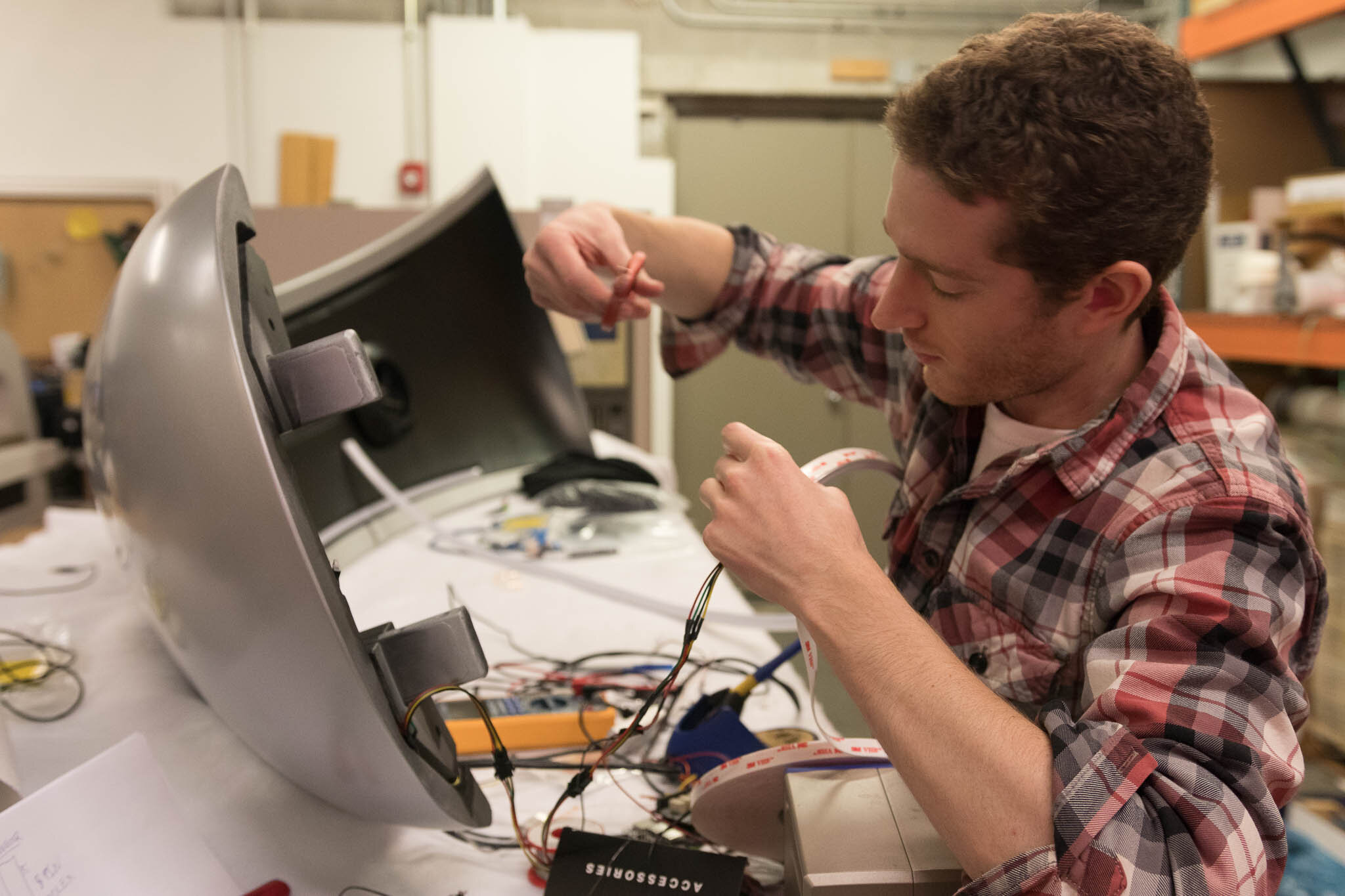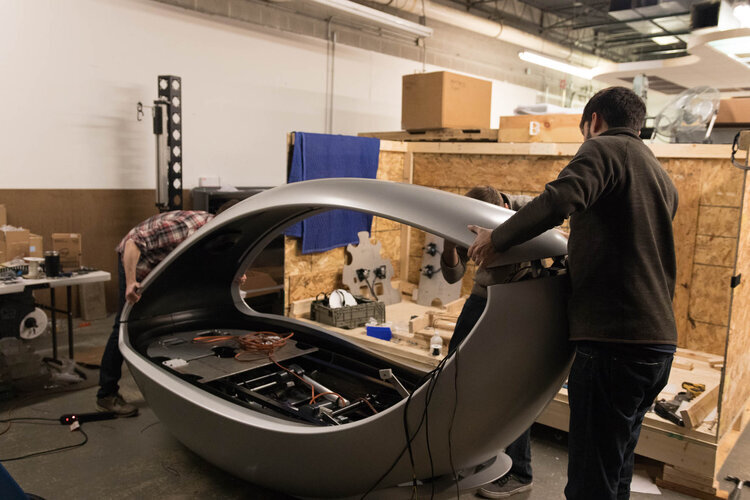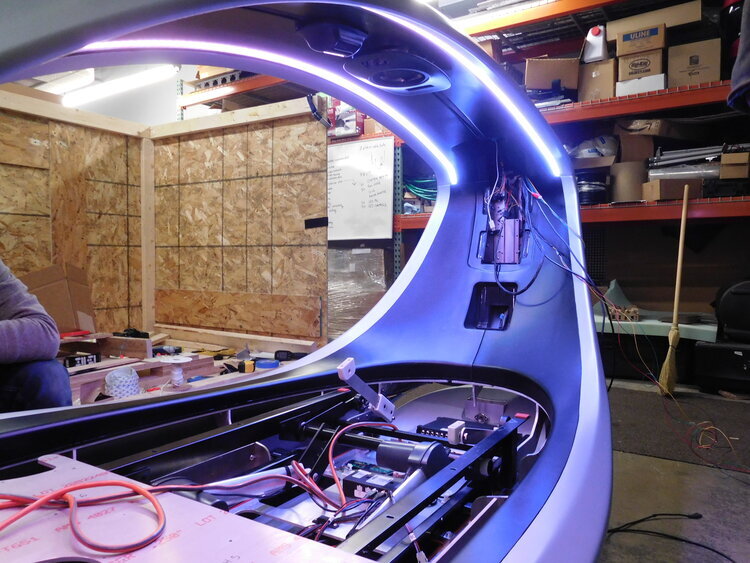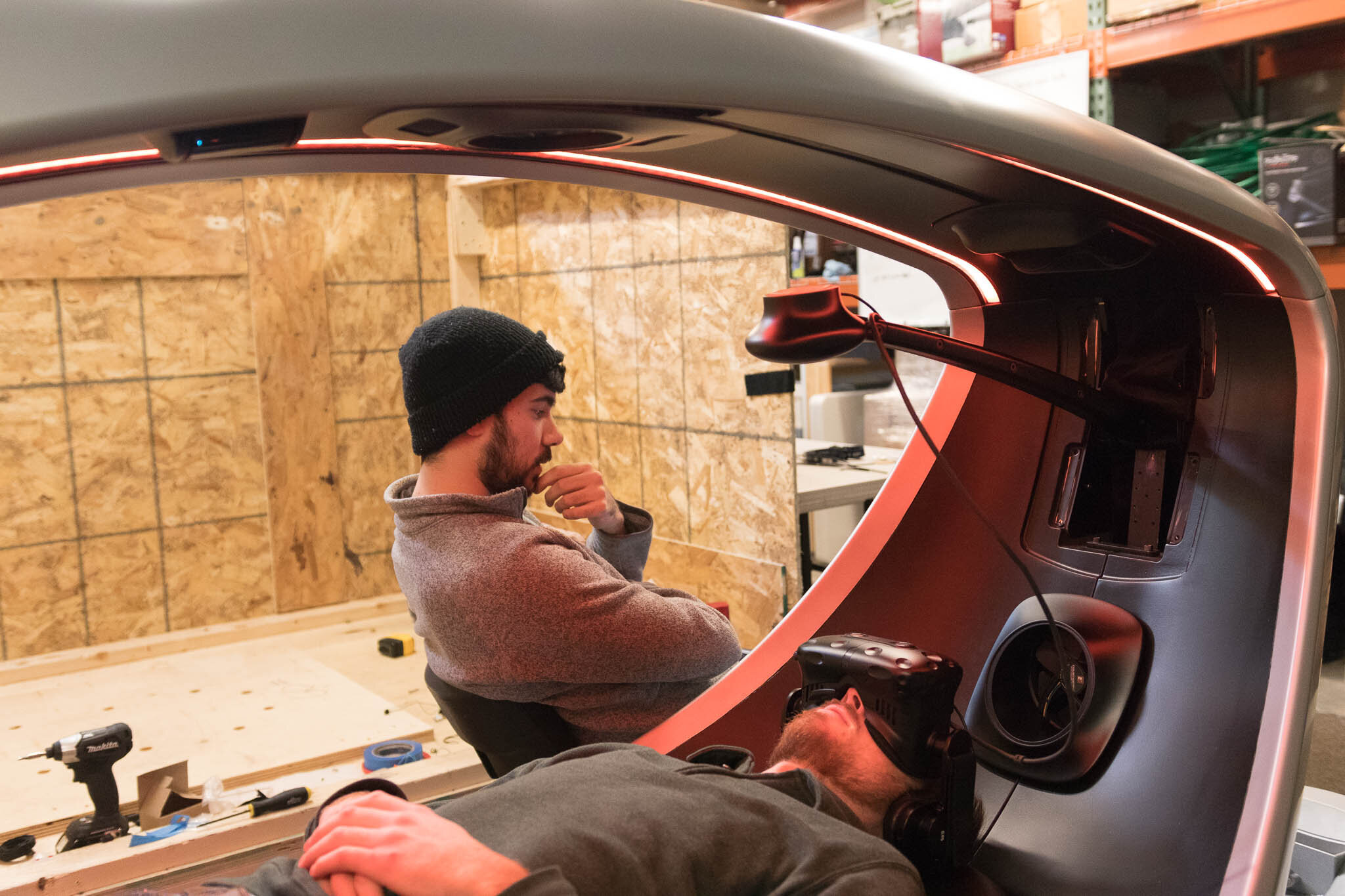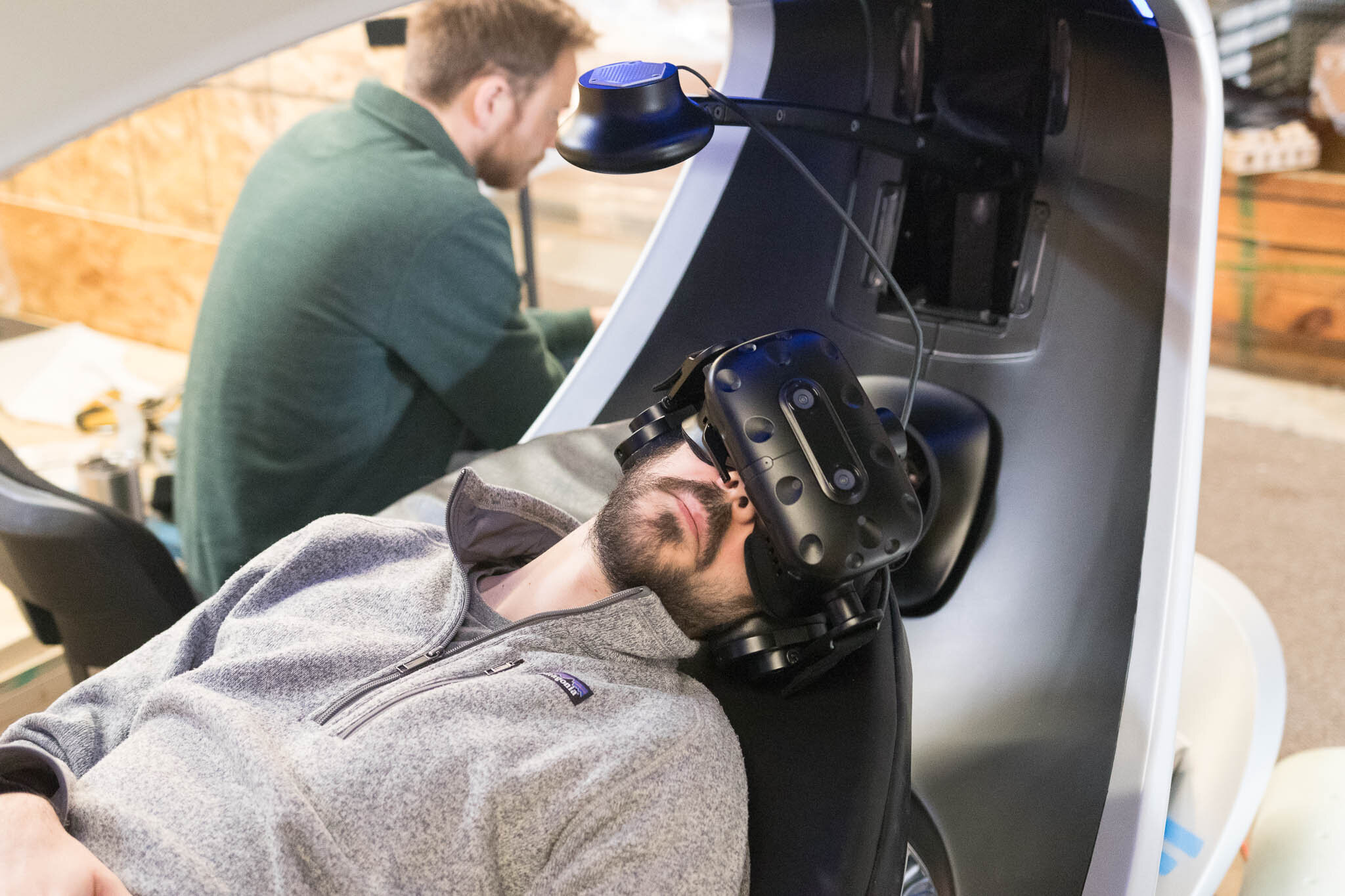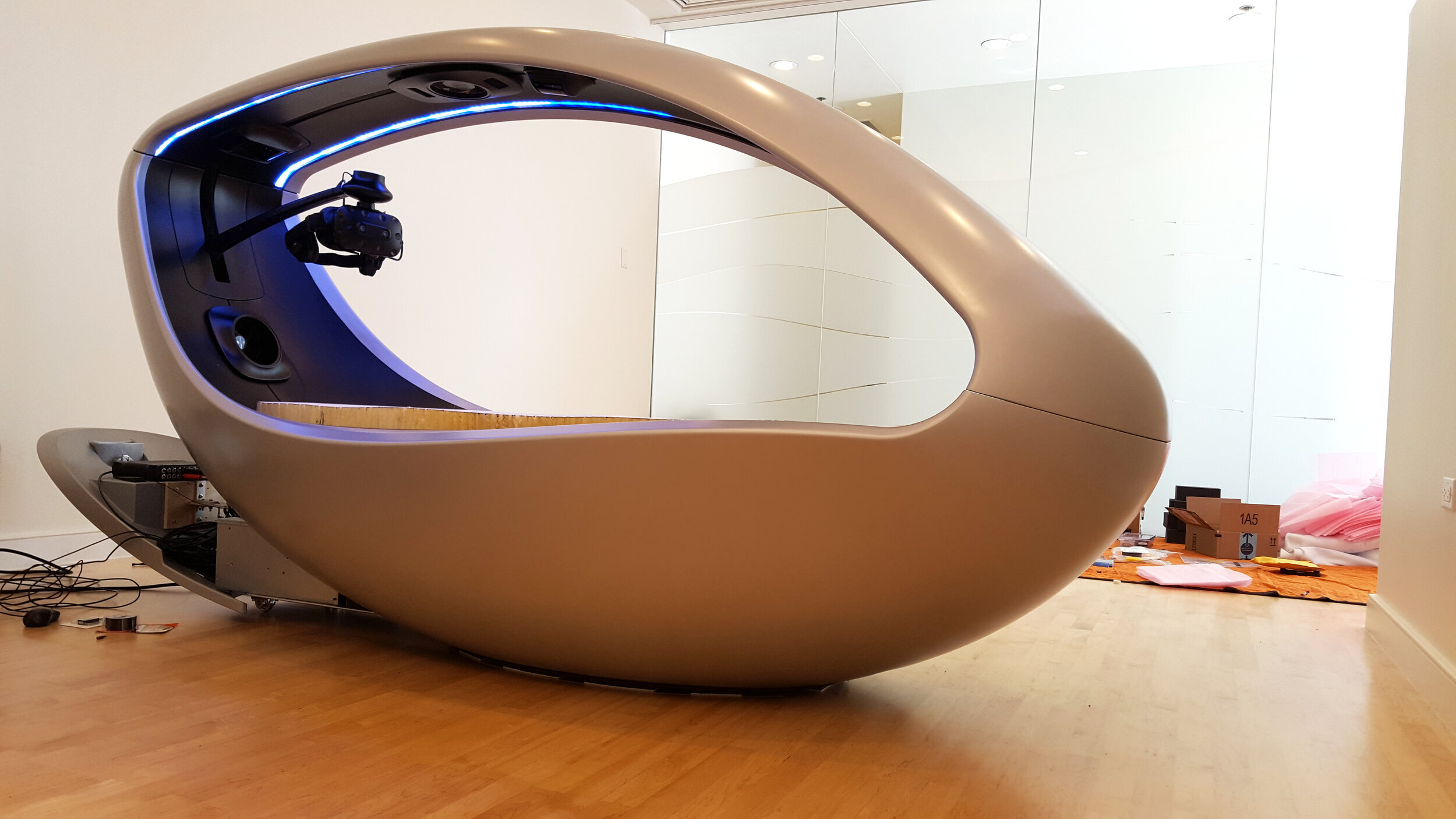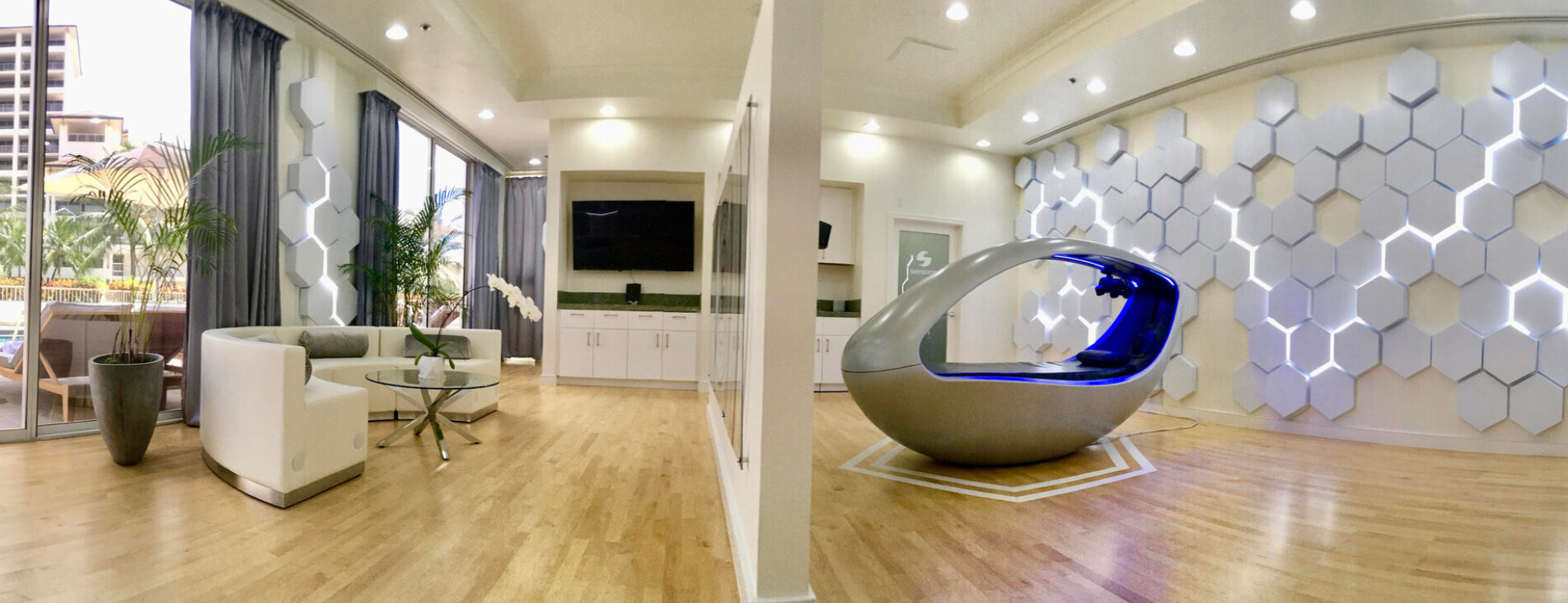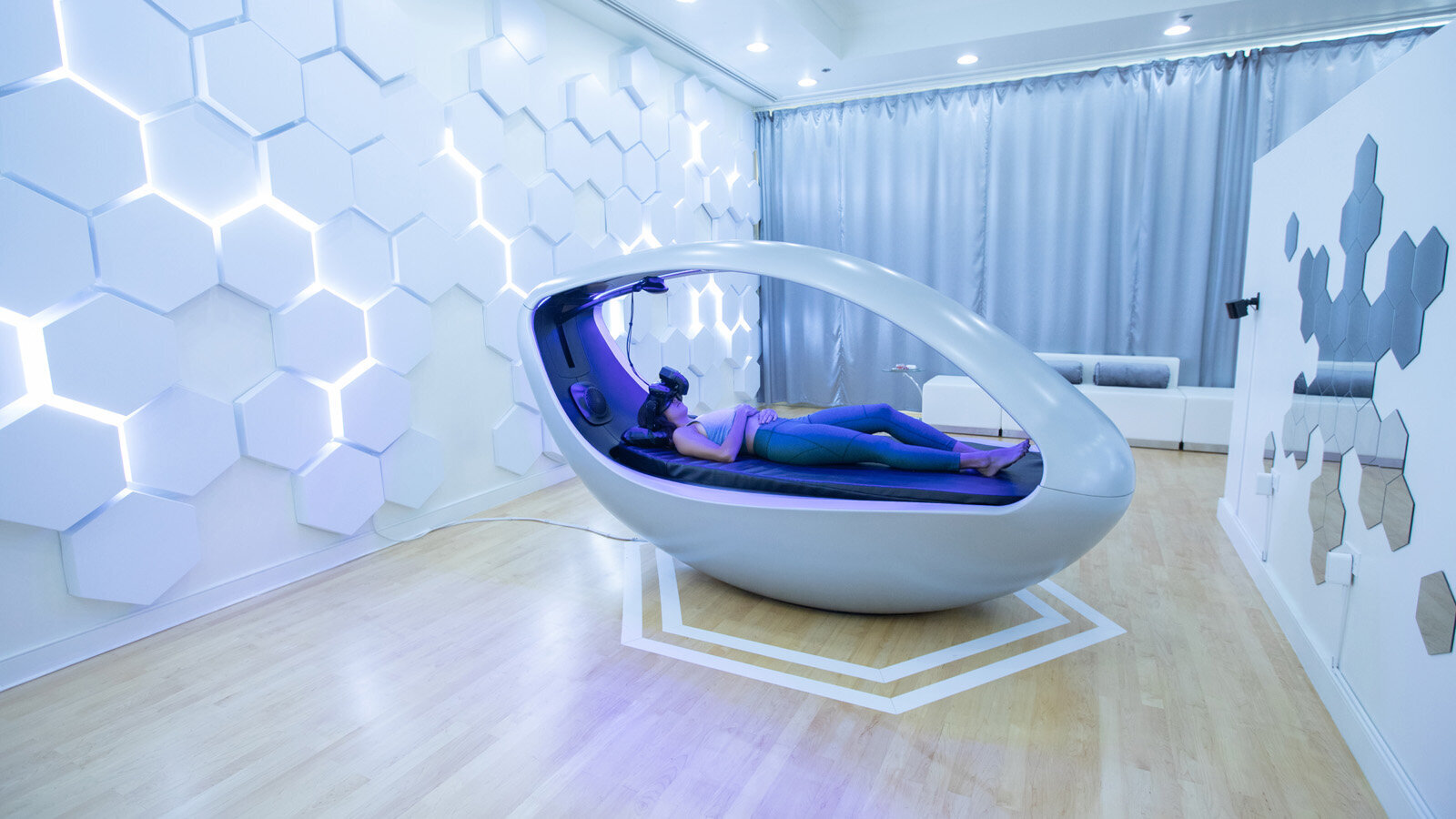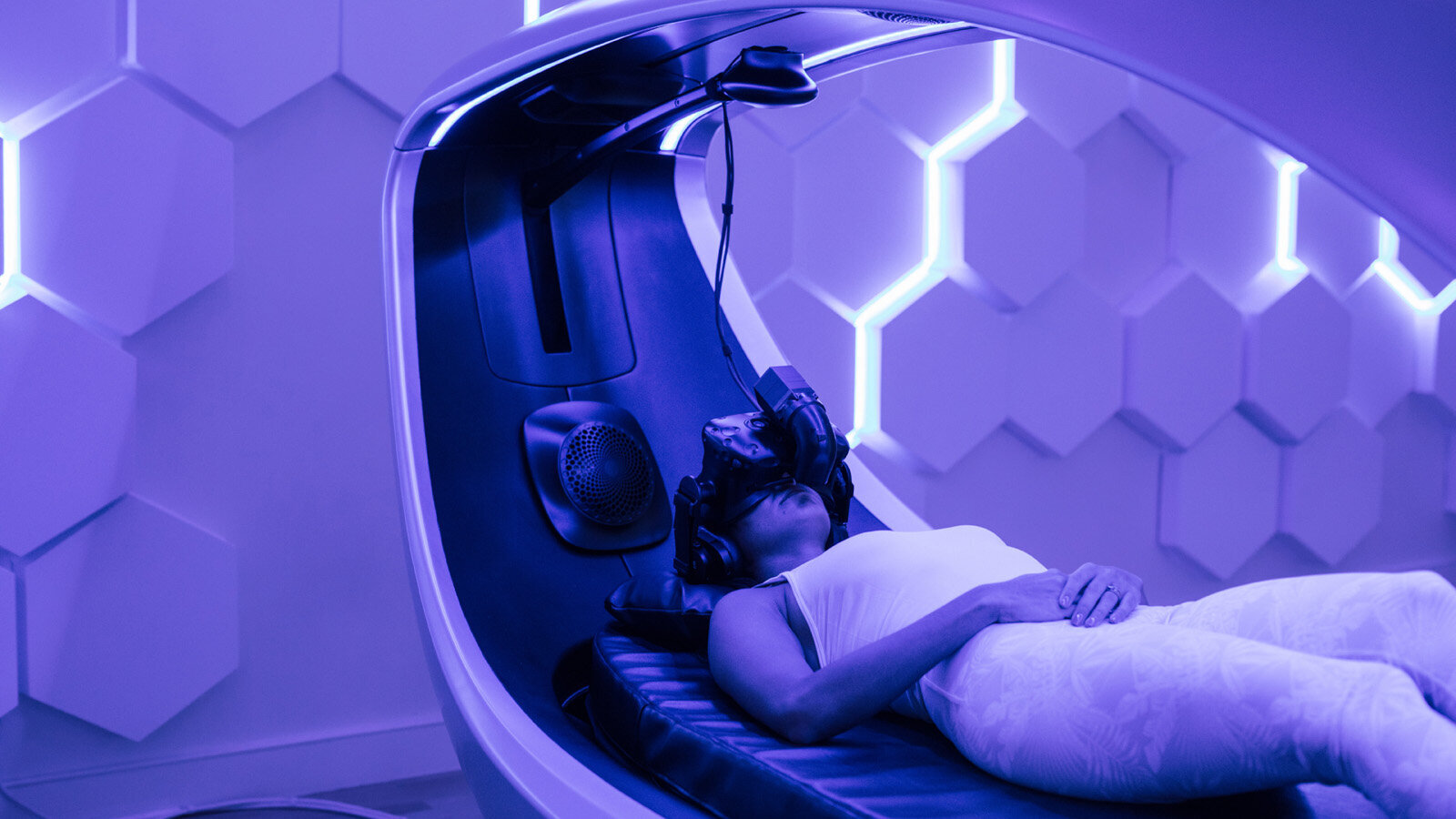Sensync is a first-of-its-kind interactive experience that brings VR and multi-sensory stimuli together to relax and rejuvenate guests. Through synchronized sight, sound, smell and touch, these virtual journeys respond in real-time to a guest’s biometric data, heightening immersion and nurturing cognitive restoration. Sensync’s founding team selected OD to design and engineer “The Vessel”, the closed-loop environment that drives this technology. After building and testing the first unit in OD’s suburban Chicago headquarters, The Vessel was installed at the Four Seasons Resort in Oahu at Ko Olina.
I served as project manager for a team that spanned four disciplines and contributed as the lead designer during this eight month project.
In designing “The Vessel”, our team needed to position and package a Zero-G bed, host of sensory components, and enough electronics to fill an IT closet.
The form had to be strikingly beautiful, comfortable, and support all body shapes and sizes. The shell’s material needed to be formed with precision, tolerate vibrations and changes in temperature and humidity, support the electronics and weight of the guest, and be finished to the high spec you would find in a luxury spa - all complicated without economies of scale. Even though we were only making one Vessel, the aesthetic would drive the brand’s direction moving forward and greatly influence the downstream engineering efforts.
Lastly, we needed a software platform to allow two-way communication between the sensory hardware and digital experience. To prototype the positions of the sensory components, we used pegboard and PVC to build a scaffold, which allowed our electrical and software engineers opportunity to work on driving the components, wire routing, and building “the bridge” to the VR experience.
The Vessel juxtaposes a pure, shimmering exterior with a black, matte interior. The dark, concave canopy obscures the complexity of the sensory components, hiding much of the tech from the user until the experience is underway. Under CNC-carved architectural foam, an aluminum chassis provides a strong, yet pliable framework for mounting the electronics and isolating the transducers. The VR headset also received custom modifications for audiophile-level acoustics, targeted aromatherapy, respiratory monitors and heart-rate tracking. Even the guest’s entry and exit was considered, with a rising headset mount, programmable ambient lighting and sloped ledges leading onto the mattress.

